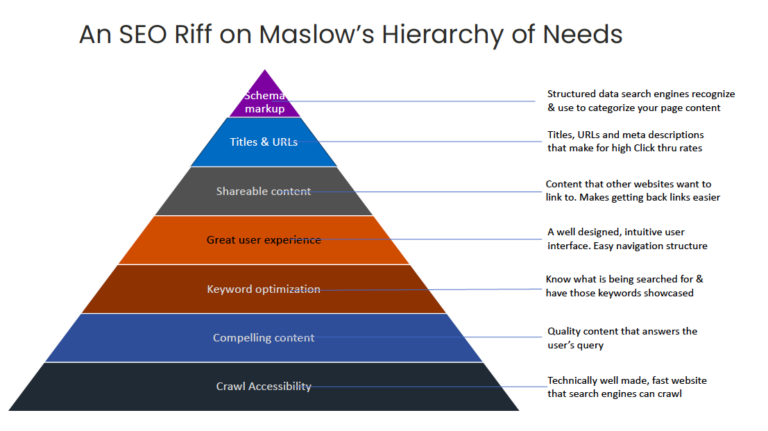How to Get More Patients with Dental SEO
The need to market your practice online is vital in today’s world. Dentists need to realize the importance of this pivot to marketing their practices online instead of the traditional methods of using printed flyers, newspaper ads, Yellow pages, and other conventional methods. Websites have a role to play in attracting new patients and retaining existing patients.
Adopting content-based marketing strategies both on their websites and social media is increasingly vital to be able to their practices noticed.
Search engine optimization (SEO) comes in to help you get found on Google when people search for dentists online.
One of the challenges with online search is that people searching for something or a business seldom go past the first page of search results on Google. Instead, most people hit the back button and refine their search instead of going to page-2.
Therefore, sites that don’t rank high on Google or Bing are in danger of being completely forgotten.
This article will present an overview of SEO for dentists and explain why SEO is needed for your practice. The article will also offer many SEO tips that will help you get started doing DIY SEO.
If you’re interested in learning how Experdent can help move the needle on SEO for your dental practice, email us info@experdent.ai to set up a free 30 minute consultation to find out how we can assist you with our dental SEO services.
SEO for Dentists: Some Tips and Some Vital Strategies
The first step to dental SEO is building a website optimized for search engines. If you don’t already have a website, it’s time to get one. You can start with a free WordPress theme from WooThemes or Elegant Themes and add pages and blog posts. Traditional wisdom was that the more pages your site has, the better. That is sadly outdated. What matters today is more content on particular topics, which demonstrates expertise instead of hundreds of shallow pages, i.e., what you don’t need are tons of pages with thin content.
And, of course, each ‘big content’ page needs to use SEO-specific keywords and phrases for each such page.
- If you need help getting started building out your website: Check out our guide on building a dental website or email us to set up a free consultation with us about our preferred web design partner.
- If you want to go the DIY route, then begin by optimizing your website to ensure that it’s easy to share on social media, has an SSL certificate (a padlock before the URL), and isn’t filled with broken links or images that Google can’t read or crawl.
- For more detail on optimizing your website for SEO, check out this guide on ‘how to optimize a website for SEO.
- Integrate local SEO into your online marketing strategy, as this brings the most traffic to your website or office.
- Be sure that your business’s name and address have a connection to all of your pages and social media profiles.
- Claim as much of your business information as possible on Google Maps, Facebook, LinkedIn, and other online business directories. These citations help search engines pinpoint your location so that customers can find you easily.
It’s also essential to have a Google My Business page, which gives you the ability to add hours of operation and photos. If your clinic is inside a shopping center or a mall, make sure to list it on Apple Maps and other business directories. You can also submit your business listings to free sites like Yellow Pages, Superpages, Hotfrog, etc.
What is SEO?
SEO is the method and process by which you can increase your website’s visibility in search engines. If you rank higher, you’ll generate more clicks and attract more visitors to your site. Since it takes a lot of work and expertise, we recommend hiring SEO professionals like Experdent with years of experience to do the job right!
The higher you rank, the better your chances that patients searching for a dentist will click on the link in the Google or Bing search results page to your website.
It takes a lot of work to boost search engine rankings. However, we have the knowledge base, experience, and expertise to do the job correctly.
If you’re a tech-savvy dentist, you can improve your website’s SEO by revising the behind-the-scenes code or updating copy on pages like blog posts or contact forms to help search engines read and index the pages more efficiently.
What is Dental SEO?
While SEO principles are the same whether your business is an electrician or a dental office, Dental SEO is an SEO specialization optimally designed for a dental office.
Dental SEO enhances the ranking of a dental practice on search engines like Google, Bing, or Yahoo. The difference between Dental SEO and vanilla SEO is that dental SEO requires a quality understanding of the domain, i.e., the business of dentistry.
Consider the example if you need surgery, you could get it done by your family GP who will surely have some knowledge of the condition, or would you choose a specialist surgeon to perform the surgery for you?
That is the difference between Dental SEO and Vanilla SEO. Consultants who may be very good at SEO for a restaurant or a clothing store will likely not have expertise in the dental domain. Experdent is that Dental SEO expert. On the other hand, we have deep domain expertise. We only do SEO for dentists!
So dental SEO, like regular SEO, is the art and science of optimizing your dental website by optimizing it technically for speed and security and optimizing it for content to have the keywords needed on the relevant pages. You are optimizing it by building external links to your dental office website. Google treats these external links votes. So more quality external links lead to better rankings.
In sum, these optimizations increase the dental practice’s visibility within organic (non-paid) search results, making it easier for potential patients to find the dental office.
SEO can be a powerful tool for practices looking to gain more new patients and grow their business. Dental SEO is the process by which a dental office’s pages are optimized for search engines to showcase the website in search results on Google and other search engines like Bing and yahoo. Dental website content optimization needs the content created to be familiar with the technical and medical terminology and an understanding of the business of dentistry.
Technical optimization of the dental office’s website will include improving site speed, ensuring that it is security compliant and mobile-friendly. In addition, these content and technical optimizations aim to make the site showcase its expertise and trustworthiness, thereby helping the search engine choose to display it in its results higher than other websites in the same industry or even the same geography.
Why would a Dentist need SEO?
Internet access has become widespread in North America, online searches have increased exponentially for local services. A whopping 96% of Canadians now use the Internet.
Among people 16-44 years old, 99% access the Internet. Four-fifth of Canadians (80%) reported having a mobile data plan for personal use. This easy access results in daily visits to sites like Google and Facebook. With this increased access comes increased advertising competition for local businesses. For example, 96% of all clicks on Google ads are for businesses with 10 locations or less.
Dentists are no exception to these statistics. According to data published by the government of Canada, there are now over 15,000 dental practices in Canada and a further 12,000 dentists who work solo or without employees or perhaps work as associates in other dental practices. Interestingly, more than 55% of customers search using a mobile phone.
1. Experdent has over ten years of experience in dental SEO, and we know how to optimize a website for search engines to rank.
2. Our team is passionate about delivering excellent results, and we have the data to back it up
3. All our work is White Hat; we stay current with Google’s algorithm changes.
SEO for Dentists The Ultimate Guide: Why does this matter?
Dentists should be aware that SEO is a critical part of any marketing plan, and Experdent can help with outstanding SEO work to boost your practice’s ranking. This SEO for Dentists The Ultimate Guide is designed precisely to be a guide that simplifies what SEO is and how you can DIY it.
->The top five search results account for 68% of all clicks, so if your site isn’t ranking well, you’re losing out on many potential patients.
->As more and more patients turn to the Internet in their search to find a dentist, SEO becomes a mighty source of leverage for the dentist in getting new patients to find them.
->As patients turn to the Internet, so are dentists. Therefore, if you have the good fortune that your competitors haven’t already started to invest in dental SEO to build their websites’ online presence and SEO rank, you may still have an open window to get in front of your competition. And attract more patients to your practice before your competition grabs them.
It’s no secret that the most valuable place to be on Google is at the top of the search results. This is because the search pages of Google are where most search traffic exists, and this is where patients looking for a dentist are likely to land.
As you may have guessed, being visible enough to catch these potential patient searches takes some serious SEO strategy.
This guide is designed to help you lay the foundation for future SEO efforts.
The Basics of SEO for Dentists
Before we dive into the step-by-step process for boosting your dental practice’s organic search success, let’s briefly break down what goes behind an effective SEO strategy.
SEO is the art of getting your practice’s website to rank higher in unpaid, organic results on Google. The point is not to trick the search algorithm into pushing you up the rankings. Instead, it generates interest from consumers for quality content that positions you or your practice as an authority in dental care.
The best SEO techniques are based on proven research and best practices. To be truly effective, it should be an ongoing process that’s constantly updated and refined to reflect the changes in search algorithm updates.
Here are two quick tips to keep top of mind while diving into DIY SEO:
Don’t use shortcuts to fool algorithms – Google’s search algorithm is smart enough to identify sites that aren’t delivering content to users, and they’ll push them down the rankings.
Don’t expect fast results: It takes time for your SEO strategy to work its way through Google’s search algorithm; it can take months before you start seeing changes in your ranking.
SEO Through Outstanding Content – A 9 Step Process
Step #1: Keyword Research – Create a List of Keywords
Step #2: Analyze What is on Google’s First Search Results Page
Step #3: Create Something Different or Better
Step #4: Optimize For On-Page SEO
Step #5: Optimize your Website for Local SEO
Step #6: Build links to your page
Step #7: Create a Plan for Content Development and Distribution
Step #8: Improve and Update Your Content
Step #9: Monitor Progress and Iterate

Experdent’s 9 Step SEO Process for Dentists
Step #1: Keyword Research – Create a List of Keywords
Solid keyword research is the first step in any successful SEO strategy is identifying which keyword phrases your potential patients are searching for and determining which ones you’re already ranking on. This process is called Keyword Research, and we highly recommend using a freemium tool like Ubersuggest to find out how much traffic each keyword phrase might bring in.

Ubersuggest also shows the difficulty of ranking for that keyword, which helps determine whether or not it’s worth going after that particular keyword.
Step #2: Analyze What is on Google’s First Search Results Page
As a part of your keyword research, check what appears on the first page of Google search when you type in queries relevant to your practice and the geography that you are located in. This will give you new ideas and help you build a viable keyword list.
Step #3: Create Something Different or Better
There is no getting away from the need to write well. Once you decide to create a piece of content make sure that the you choose a topic that allows you to use the most powerful keywords that you have gathered in Steps 1 and 2. Make your article readable. Don’t write lengthy paragraphs. Make sure that each section is clear. Preferably title each section.
Use lists in your article. Provide internal links and external links.
And finally make sure that you pay attention to the meta data of your content piece created. Meta title tag, meta description, alt tags for your images, all of these are vitally important.
Step $4: Optimize for On-Page SEO
Dentists are concerned with their patient’s dental health. But dentists also need to be concerned with the health of their website! While it can seem like a daunting task, optimizing your website for on-page SEO is relatively easy when broken down into manageable steps. Here are some best practices you can follow to optimize your site’s pages for on-page SEO:
1) Choose keywords that accurately describe what your page content is about
2) Write an engaging title tag and meta description that will entice people to click through to your content.
3) Include search engine friendly images (with alt tags and captions!) and videos (with transcripts!) that will help you rank higher in Google’s image and video search.
4) Analyze your on-page SEO with free tools like the Google Search Console, Moz Open Site Explorer, or Screaming Frog.
5) Make sure all your pages are mobile-friendly (use Google’s mobile-friendly test here).
There you have it! You now know how to optimize each page on your website for on-page SEO. One more thing – do not forget to update your site’s blog posts with optimized images and videos! When applied to each blog post, the steps in this section will help your pages get ranked.
Image Alt Tags and Keywords
Use high-quality images with a descriptive filename and alt tags
Incorporating keywords in your image filenames and alt tags is also crucial for increasing the visibility of your website in organic searches. The SEO Rules blog offers excellent tips to help you optimize your images, such as (“gold crown on a molar” instead of “crown.jpg”)
Ensure the filename and alt tags are unique for each image, so Google doesn’t associate more than one keyword with your image.
Include alt text in every image and use it to describe the content in the image, not just what you think will display when a user is unable to show the image in their browser.
Include a company name in your images’ file names and alt text
When including your business name in an image’s filename and alt text, make sure it is appropriately formatted; using all caps or adding special characters makes it harder for search engines to read.
H Tags on your Webpages
H tags (or Headline tags) are a great way to help Google or other search engine robots crawl and index your page content for better organic SEO results, as well as other forms of site analysis. For example, the first HTML heading element should have an H1 tag, whereas subsequent headings should be H2, H3, and so on.
Step #5: Optimize your Website for Local SEO
If you want to show up in the “8 Tips for Preventing Cavities” search results, you have to be on pages that are about preventing cavities. For example, if your practice is located in a small town where you’re the only dentist, your website might be ranking for “dentist near me.” In this example, it might be worth creating a page on your website with local information like office hours and locations, as well as links to pages that position you as an authority in dental care.

Add relevant Keywords
As a Dentist, it is vital to make sure that your website is correctly optimized for SEO to attract new patients. Since people search for dentists in their area, adding relevant keywords to your website can help you rank higher in the search engine results pages (SERPs) and drive more traffic.
Your use of tools like Ubersuggest and SEMRUSH will show you that instead of optimizing your website for terms like a dentist or dental services, you should optimize the content on your website by including in it what are called long-tail keywords. These long-tail keywords could be, for example: “dentist in [your city]” or “children’s dentist in [your town]” or even “broken tooth repair in [Your neighborhood].”
You also need to include LSI keywords when optimizing your pages. These LSI (Latent Semantic Index) keywords are expressions that are broadly related to your business. For example, these would be keywords like Laughing gas sedation, root canal therapy, Cerec, emergency dentistry, and other services that you offer.
Including locational keywords in the URL of your website could be invaluable. The URL should include all relevant keywords and be short and easy to remember and type in a browser address bar.
Ask your web development team to help you identify and implement best practices to ensure your website’s marketability for organic search.
Optimize for Local Searches
Like people search for a school in their neighborhood, they also search for a Physician or a Dentist in their community or local area. Therefore, the focus of your SEO effort needs to reflect this “local” emphasis of your future patient’s search intent.
You do this simply by adding your location to your page titles and URLs where possible.
Further, ensure you are listed on Google Maps, Apple Maps, Yelp, and other directory sites so that you are visible in local searches even from outside your immediate neighborhood.
Step #6: Build links to your page
1. The number of backlinks to your website impacts your search ranking. The quality of these backlinks is an equally important marker for search engines. Backlinks from shady websites that are part of link farms or Private blog networks could damage the ranking of your website.
2. This means that you need to earn quality links to maintain your rankings.
3. To get quality links, you first need to create quality content. You can then reach other websites and bloggers and request them to link to your content. Getting quality backlinks is not an easy process. It takes time and significant effort to build relationships with these websites before they give you a backlink.
4. Quality backlinks will boost your rankings in search results; they will also help position you as a voice of authority in your domain.
5. Links can come from just about anywhere – within articles, external articles, or blog posts. Credible sources or websites with a high domain rank will have a disproportionately higher impact on your ranking. For example, a link to your website in a report on a news site like CNN will significantly impact your chances of receiving a material increase in rankings.
Outreach
Working on your website’s SEO can seem daunting, but it’s important for getting your site seen by more people.
Once your site is properly optimized for your chosen keywords, and you have created some outstanding content pieces, you need to reach out to other websites and ask them to link to you. This will help improve your SEO and get you more visibility online.
When you do outreach make sure that you have researched who you are sending your email request to, and what content will have value for them to link to. Emails sent off a free template downloaded from the web, will be recognized for what they are, and instantly deleted.
Persistence is key here. Not many bloggers you reach out to will respond back to you. However, a followup that contains a good reason why the blog or website should link to your article may help persuade them to provide that link to you.
This article from ahrefs provides some amazingly detailed advise on how you can proceed on link building.
Guest Posting
-Find blogs that allow guest posts and link back to your website (build relationships and get natural links).
-Contact bloggers whose content you like and explain what you can do for them; write a high-quality article for them in exchange for a link.
-Send the article to be proofread once you complete it to make sure the grammar is perfect.
-Ask if they would consider adding images to your article, this will give you a good chance of ranking in Google Image search.
-Submit the post and enjoy your new backlink!
Guest blogging can be an effective way to get high-quality backlinks and build relationships with other sites to bring new qualified traffic and greater authority.
Step #7: Create a Plan for Content Development and Distribution
Identifying the right keywords to target is crucial, but those rankings won’t do you any good if you don’t have useful content on your site to back it up.
This quality is why it’s essential to create content that positions you or your practice as an authoritative voice in the dental community while providing information of value to potential patients.
Content development should be a collaborative effort between yourself and your marketing team. We’d recommend using tools like Buzzsumo to get an idea of what topics are currently popular and then determine how you can provide helpful articles or blog posts that serve those needs.
Once the content is created, you should distribute it via email newsletters, social media channels (like Facebook, Instagram, Twitter), blogs on your website, and other marketing channels like PPC ad campaigns. Finally, we’d recommend pulling this information together in a Google Sheet to keep track of what has been created, shared, and distributed.
Step #8: Improve and Update Your Content
1. If you’re not refreshing your website content regularly, you’re doing yourself a disservice.
2. Content audits help you figure out what to update – and how to improve it.
3. Make sure you have a reason to update your content – don’t just do it for the sake of doing it!
4. an excellent way to update this content is by creating an editorial calendar (this could be as simple as a spreadsheet).
5. One of the most important things that you should do after an update is to ensure you measure your changes systematically.
6. The first step in measuring your update’s effectiveness is to make sure you have your analytics up and running.
7. The best way to track the effectiveness is by using UTM parameters (you can do this with bitly).
8. If you want to improve your brand equity, consider putting together a case study of sorts – i.e., an example of how someone successfully used your product/service.
9. You should also have a separate content strategy for getting links.
10. This will require some time and research, but there are plenty of tools that can be used to track your link-building progress – e.g., Moz’s Open Site Explorer or AHREFs. It might seem tedious at first, but you should stick with it to get results.
Step #9: Monitor Progress and Iterate
Once you’ve identified keywords, targeted content and optimized your website to rank for those keywords in Local SEO, it’s time to monitor how that content is performing. Again, Google Analytics provides excellent insight into not just page views but keywords that brought people to your site.
Tools like SEMRush or KeywordTool.io can help measure the number of searches for your target keyword phrase over time, which will give you an idea of how much traffic each keyword is bringing in. Then, use the information generated by these search tools to determine which keywords are most effective at delivering potential patients to your site and adjust your strategy accordingly.
The best SEO strategies are dynamic and iterative, which means that they’re constantly evolving to keep up with the latest changes in Google’s search algorithm. For example, if you weren’t optimizing for mobile devices when creating content or designing a website, there was a good chance that Google didn’t rank you for specific keywords. Now, Google has made it clear that mobile-friendly websites are ranked higher in mobile search results, so it’s essential to keep up on the latest updates if you want your website to stay relevant.
What More Can You Do That Will Help Your SEO Effort?
Optimize for Mobile devices
Mobile search traffic is growing dramatically and will soon surpass desktop searches. Your SEO plan should reflect this trend by placing a significant emphasis on optimizing your site for mobile devices. As part of this effort, you’ll need to add responsive design to your website so that mobile users can get a great experience. In addition to responsive design, ensure that your site is easy to navigate on a mobile device and that it uses the latest technology by being built in HTML5.

Start Blogging
Blogging is one way to increase website visibility and create interest in your content. For example, a blog related to your practice and containing tips about dental care will attract an audience of readers for your blog. This traffic will help improve your ranking as Google will note the extra traffic as a sign of your website’s authority.
Equally, the search engines’ bots will notice the new content, and that freshness of content will help you rank higher.
Include Photos on your Blogposts
Visuals are more engaging than text alone. Including relevant images in the content you write will help capture readers’ attention and straightforwardly provide instructions. For example, an article about floss would benefit from having an image of someone flossing their teeth. This straightforward approach makes it easier for your readers to understand and follow the step-by-step instructions.
Take Advantage of Content Syndication websites
Content syndication is a widely used SEO technique that involves republishing your blog posts on other high-ranking websites. While this will not bring you new readers, it will help keep old traffic coming back to your site and revisit your blog for more informative articles. The best-known example is EzineArticles.com, but many others will also be happy to republish your content if you contact them via email and ask for permission.
Create a Resource page for your area
Creating a resource page with information about your town or county activities will help promote your website and increase its exposure. Customize each article by including images of smiling clients, before and after photos (if relevant), and an updated list of contact details. This pleasant imagery is helpful for new patients looking for an experienced dentist in their area, but it will also help keep your old patients coming back for more.
FAQs about Dental SEO
More questions about dental SEO the ultimate guide? Please take a look at our FAQ list below!
How does Dental SEO work?
Implementing an SEO process is vital because there are hundreds of dentists in every city. SEO can be seen as consisting of three parts: ‘on-page,’ ‘off-page,’ and ‘technical SEO.’ These are explained in a bit more detail below:
On-Page SEO:
>Rewriting meta descriptions and titles (Sites with better, more relevant descriptive text tend to rank higher in search engines)
>Adding keywords and optimizing for conversions (When thinking about conversion optimization, take into consideration the types of products offered as well as frequently asked questions. Providing this information will give your website a boost.)
Off-Page SEO:
>Attracting quality backlinks (Quality links are the backbone of SEO. These are links from industry sites that are relevant to your business.)
>Setting up complete social media profiles for your dental practice (Social media is not only beneficial for building a robust online presence, but it can also bring in new clients who will spread the word about your services!)
> Researching your competitors (A great way to gain new ideas for boosting your site is by looking at what other sites are doing. Try using a tool like Moz or SEMrush.)
Technical SEO:
>Making sure that all pages on your practice’s website load quickly This is the most crucial yet simplest form of SEO, and it needs to be implemented right to give your practice a boost.
>Getting your website and your GMP page ‘Verified by Google.’ If you’re not taken seriously as an authority site, you’ll receive lower rankings than those who are. So ensure that your practice is verified with Google so that it does not have a barrier in showing up higher in the search results.
>Monitoring your site’s analytics. Well understood performance metrics are the most critical step in tracking progress and knowing what’s working. Tools like Hotjar give you great feedback so that you can optimize your website to fit users’ needs.
What does Google actually do?
In summary, Google is a search engine that crawls the Internet with bots. These bots index website pages as they find them – think of them as creating cards for a book in a giant library.
Google ultimately ranks websites on over 200 factors. However, we can impact the dominant ones: content and backlinks from other websites. A combination of these signals affects where your website appears in search results.
How long does Dental Search Engine Optimization take?
It can take six months to see any results. In some cases, practices will begin to see results like increased traffic, phone calls, and appointments in four months. It is essential to understand that this timeframe is normal and is expected since SEO is a long-term strategy vs. a short-term strategy like pay-per-click (PPC). It’s not uncommon for it to take upwards of one year before you start seeing the benefits from your investment in good quality SEO work. For this reason, we often tell clients that they should plan on investing $700-$1500 per month and expect to wait about 12 months for ROI on their investment.
How much does SEO for Dentists cost?
The average cost for dental SEO is $750 to $2000 per month, though rates vary depending on the size and complexity of the project. Partnership with a consultant or dental SEO expert typically costs $80 to $200 per hour in Canada.
We work exclusively with Dentists!

Reach more patients with Dental SEO services
If you’re a dentist looking to improve your SEO ranking, Experdent can help. Our team of experienced SEO professionals knows how to drive more visitors to your website and, through that traffic, assist you in attracting new patients to your practice. We’ve helped our dentist clients boost their search engine rankings through the delivery of our SEO services, and we can do the same for you.
Let us know if you don’t have the time or a staff member to help you DIY your SEO. We offer dental SEO service plans to give you the presence to attract more patients. You’ll barely have to lift a finger!
Email us: info@experdent.ai or fill out our simple online contact form today to get in touch. Experdent can help your dental office get the SEO ranking you deserve. Let us know what we can do for you, and one of our team members will be in touch soon!
We are results-driven, dentist-focused, and experts in SEO for dental offices in North America. So, if you are a dental office looking for SEO or need advice on how to do local SEO right, call us for a free 30-minute consult.









